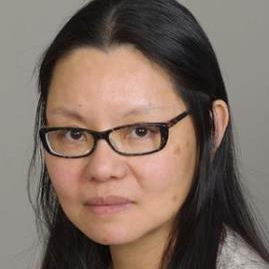Sensors and Advanced Medical Imaging
A special issue of Sensors (ISSN 1424-8220). This special issue belongs to the section "Biosensors".
Deadline for manuscript submissions: closed (28 August 2023) | Viewed by 2240
Special Issue Editors
2. Department of Biomedical Engineering, University of Arizona, Tucson, AZ 85721, USA
3. Department of Medicine, University of Arizona, Tucson, AZ 85724, USA
Interests: neurodegenerative diseases; oncology; theranostics; clinical trials; radiopharmaceuticals; scanner development
Interests: wearable technology; digital health; fall prevention; cognitive impairment; exergame; gamification; diabetes care; diabetic foot; wound healing; telehealth; dementia; peripheral vascular disease; movement science; mobile health; population health; aging in place and well-built
Special Issues, Collections and Topics in MDPI journals
2. Department of Electrical and Computer Engineering, University of Arizona, Tucson, AZ 85721, USA
Interests: smart grid and smart home; VLSI system for biomedical applications, multicore design; data centric systems; reliable systems and circuits; DNA computing; and synthetic biology
Special Issue Information
Dear Colleagues,
Anatomy and physiology are the fundamentals of medicine. One of the earliest medical sensors, the stethoscope, is still an invaluable medical tool for examining the structure and function of the heart. The stethoscope is also an excellent tool for diagnosing disease. The electrocardiogram, a wearable sensor, provided novel insight into the electrical nervous system of the heart.
Advanced imaging in the form of ultrasound, computed tomography, magnetic resonance imaging, and nuclear medicine has revolutionized the ability to diagnose and monitor disease by not only providing detailed anatomical imaging but also physiologic information. More recently, molecular imaging has also become a more routine part of standard of care.
The next leap forward will require the synergistic combination of advanced sensor technology and imaging. This powerful combination will provide new insights into the structure and function of both health and disease. This fusion of technologies has the unique ability to study the complex and diverse connections among systems.
Prof. Dr. Phillip H. Kuo
Prof. Dr. Bijan Najafi
Prof. Dr. Janet Meiling Roveda
Prof. Dr. David G. Armstrong
Guest Editors
Manuscript Submission Information
Manuscripts should be submitted online at www.mdpi.com by registering and logging in to this website. Once you are registered, click here to go to the submission form. Manuscripts can be submitted until the deadline. All submissions that pass pre-check are peer-reviewed. Accepted papers will be published continuously in the journal (as soon as accepted) and will be listed together on the special issue website. Research articles, review articles as well as short communications are invited. For planned papers, a title and short abstract (about 100 words) can be sent to the Editorial Office for announcement on this website.
Submitted manuscripts should not have been published previously, nor be under consideration for publication elsewhere (except conference proceedings papers). All manuscripts are thoroughly refereed through a single-blind peer-review process. A guide for authors and other relevant information for submission of manuscripts is available on the Instructions for Authors page. Sensors is an international peer-reviewed open access semimonthly journal published by MDPI.
Please visit the Instructions for Authors page before submitting a manuscript. The Article Processing Charge (APC) for publication in this open access journal is 2600 CHF (Swiss Francs). Submitted papers should be well formatted and use good English. Authors may use MDPI's English editing service prior to publication or during author revisions.
Keywords
- biosensors
- wearables
- medical imaging
- structure
- function









